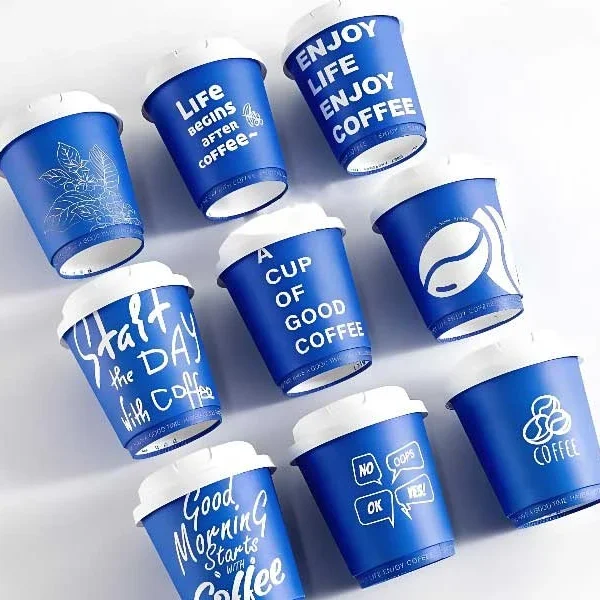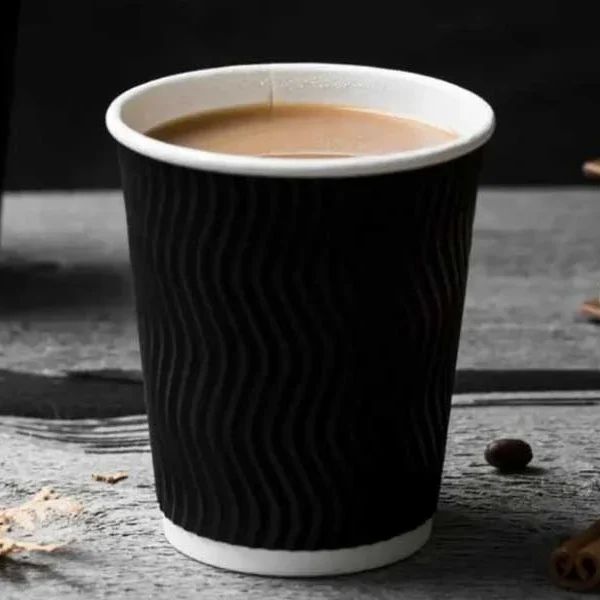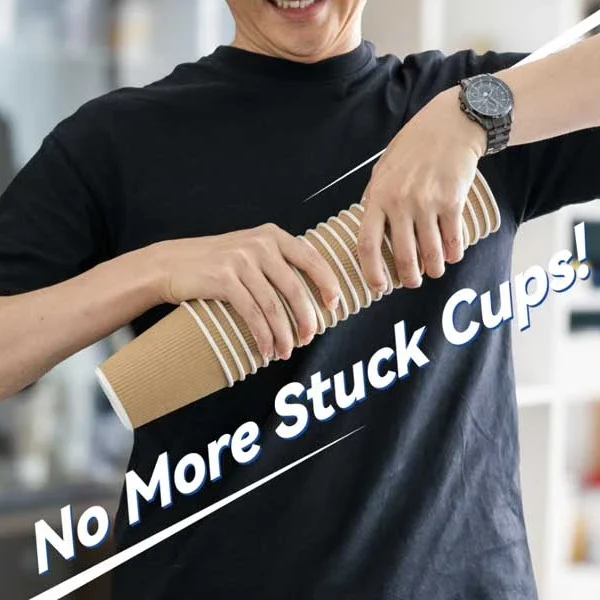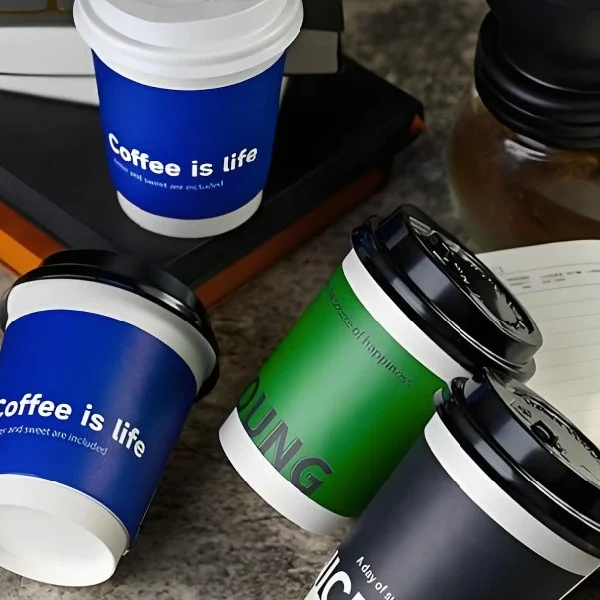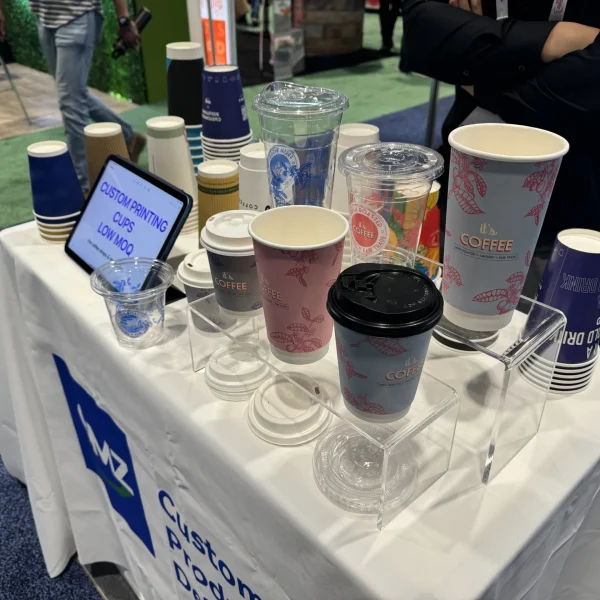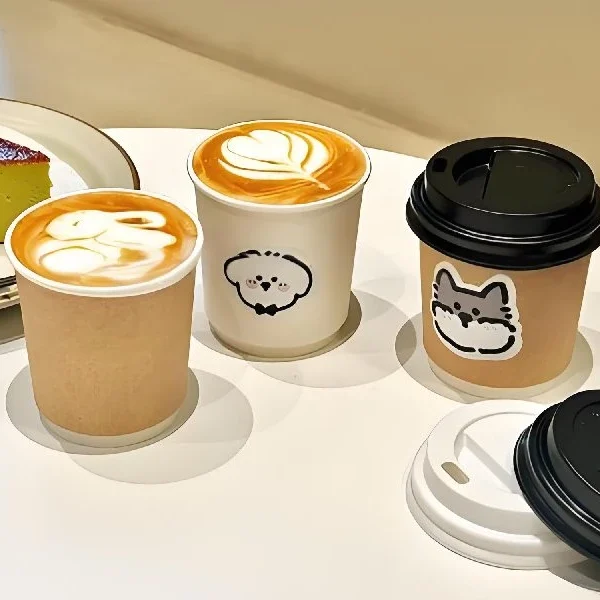Microwave cooking is a quick and easy way to heat your food, but not all containers are safe to use in microwaves. When it comes to paper cups, many people wonder, “Can you put paper cups in the microwave?” This article explores how to tell if a paper cup is truly microwave-safe, the risks involved, and some alternatives to consider.
Key Takeaways
- Always check for a microwave-safe label on paper cups before using them in the microwave.
- Be aware of potential risks like chemical leaching and fire hazards when microwaving paper cups.
- Consider using glass or ceramic containers as safer alternatives for microwaving.
Identifying Microwave-Safe Paper Cups

When it comes to using paper cups in the microwave, it’s important to know how to identify which ones are safe. Not all paper cups are created equal, and some can pose risks when heated. Here are some tips to help you choose wisely:
Checking for Microwave-Safe Labels
- Look for a label that says “microwave-safe” on the bottom of the cup. This is your first clue that it can handle the heat.
- If there’s no label, it’s best to avoid microwaving that cup.
- Double wall coffee cups, for example, are often designed for hot drinks but may not be safe for microwaving unless specified.
Understanding Manufacturer Instructions
- Always read the instructions provided by the manufacturer. They often include important information about the cup’s heat tolerance.
- If the instructions are unclear or missing, consider using a different container.
- Remember, even if a cup looks sturdy, it might not be safe for microwave use.
Recognizing Safe Materials
- Paper cups made from 100% recyclable materials are generally safer than those with plastic coatings.
- Avoid cups with metallic elements or coatings, as these can spark in the microwave.
- If you’re unsure, opt for glass or ceramic containers instead, as they are typically microwave-safe.
Always prioritize safety when microwaving. If in doubt, choose a different container to avoid any potential hazards.
Potential Risks of Microwaving Paper Cups

Microwaving paper cups might seem convenient, but there are some serious risks to consider. Here’s what you need to know:
Chemical Leaching Concerns
When heated, some paper cups can release harmful chemicals into your food or drink. This is especially true for cups that are not labeled as microwave-safe. Here are some points to keep in mind:
- Check for labels: Always look for a microwave-safe label on the cup.
- Avoid unknown brands: If you’re unsure about the brand, it’s better to avoid microwaving it.
- Be cautious with hot liquids: Hot liquids can increase the risk of leaching.
Fire Hazards and Safety Precautions
Microwaving paper cups can also pose fire risks. Here are some safety tips:
- Don’t overheat: Always monitor the time you microwave the cup.
- Avoid metal: Ensure there are no metal parts on the cup, as they can spark.
- Use a microwave-safe plate: Place the cup on a microwave-safe plate to catch any spills.
Impact on Food Quality
Microwaving in paper cups can affect the taste and quality of your food. Consider these factors:
- Texture changes: Paper cups may not hold up well, leading to soggy food.
- Flavor absorption: Some cups can absorb flavors, altering the taste of your food.
- Temperature inconsistency: Paper cups may not heat evenly, leaving some parts cold.
Always prioritize safety when using paper cups in the microwave. It’s better to choose materials that are specifically designed for microwave use, like glass or ceramic.
Alternatives to Paper Cups for Microwaving

When it comes to microwaving, there are several safer options than paper cups. Here are some alternatives you can consider:
Using Glass or Ceramic Containers
- Glass and ceramic dishes are generally safe for microwaving. Just make sure they don’t have any metallic paint or decorations.
- They heat evenly and don’t leach chemicals into your food.
- Look for labels that say “microwave-safe” to be extra sure.
Opting for Microwave-Safe Plastics
- Not all plastics are created equal! Always check for the microwave-safe symbol on plastic containers.
- Avoid single-use plastics, as they can melt or release harmful chemicals when heated.
- If you’re unsure, it’s best to stick with glass or ceramic.
Remember, when in doubt, opt for a safer alternative like glass or ceramic. This way, you can enjoy your food without worrying about safety!
Practical Tips for Safe Microwaving

Avoiding Overheating
When using a microwave, it’s important to avoid overheating your food. Overheating can lead to uneven cooking and even cause some containers to warp or melt. Here are some tips to help you:
- Use shorter cooking times and check your food frequently.
- Stir or rotate food halfway through to ensure even heating.
- If you’re reheating liquids, use a microwave-safe container and cover it loosely to prevent splattering.
Monitoring for Damage
Before microwaving, always check your containers for any signs of damage. Damaged containers can release harmful chemicals or even break in the microwave. Here’s what to look for:
- Cracks or chips in glass or ceramic containers.
- Discoloration or warping in plastic containers.
- Any signs of wear on paper products, like paper towels or plates.
Safe Heating Practices
To ensure safe microwaving, follow these practices:
- Always use containers labeled as microwave-safe.
- Avoid using metal containers or utensils, as they can cause sparks.
- Cover food with a microwave-safe lid or paper towel to keep moisture in and prevent splatters.
Remember, when in doubt, it’s best to choose safer options like glass or ceramic containers. They not only heat evenly but also help maintain the quality of your food.
Final Thoughts on Microwave-Safe Paper Cups
In conclusion, knowing if a paper cup is truly microwave-safe is important for your health and safety. Always look for labels that say ‘microwave-safe’ to be sure. If there’s no label, it’s best to avoid microwaving it. Remember, not all paper cups are created equal; some may have coatings that can melt or release harmful chemicals when heated. When in doubt, choose glass or ceramic containers instead. By following these tips, you can enjoy your hot drinks without worry!
Frequently Asked Questions
Look for a label on the cup that says it’s microwave-safe. If there’s no label, it’s best to avoid microwaving it.
Yes, there can be risks like chemicals leaching into your food or the cup catching fire if it gets too hot.
You can use glass or ceramic containers, which are usually safe for microwaving, or opt for microwave-safe plastic.

